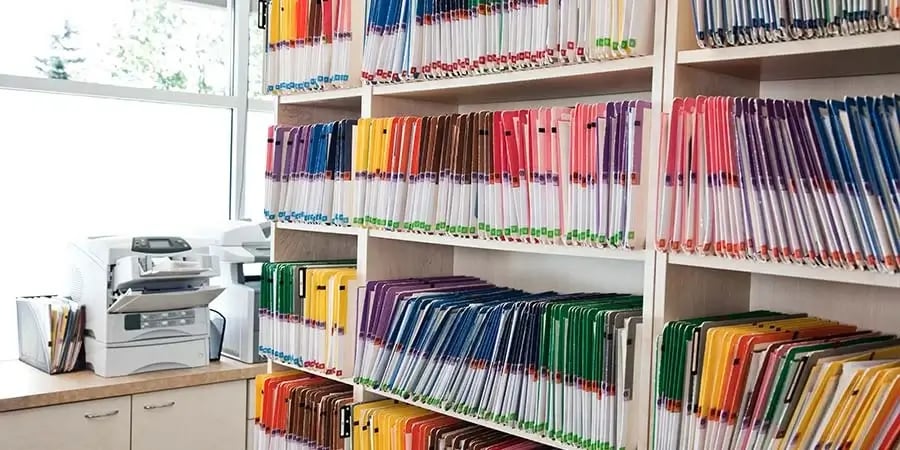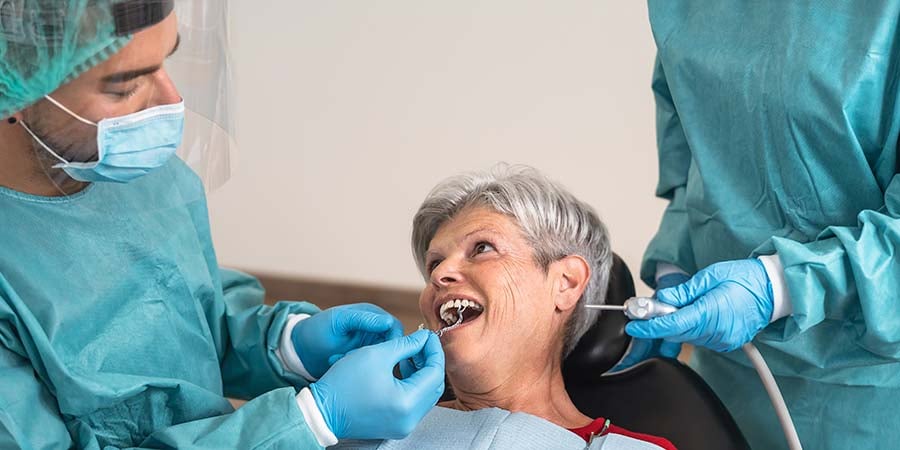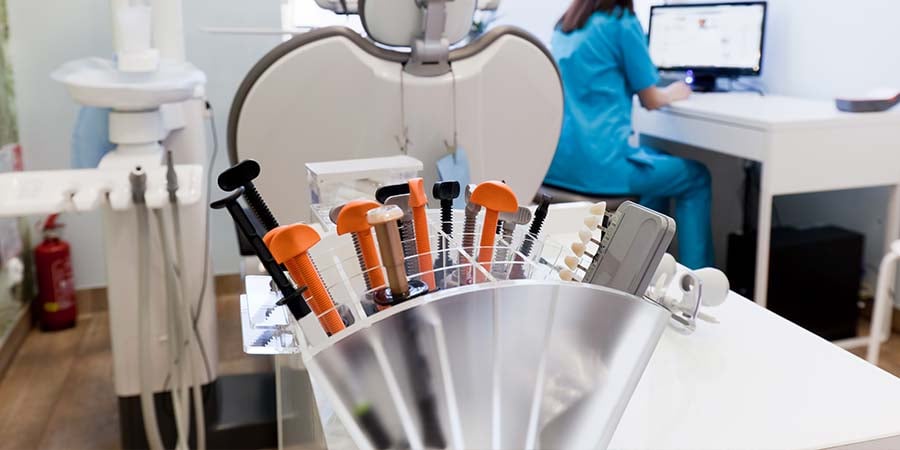Share this
Creating & Maintaining Clean Air in Family Dental Offices
by HEPACART on Jul 27, 2021
How can you maintain clean air in an office riddled with so many dental contaminants?
If you work in family dentistry as a dentist, dental surgeon, hygienist, or lab tech, you're unfortunately in the #1 most unhealthy profession, based on exposure to contaminants, exposure to disease and infections, and time spent sitting.
Many of the health hazards in the typical dentist office are delivered by airborne pathogens, and our specialty at HEPACART is neutralizing those. Whether it's dentistry-related aerosols and sprays, patients infected with colds, influenza, or the new COVID-19 variant, indoor air quality in dental offices can be greatly improved with HEPA-filtered air purifiers.

Problems
So, why the problem with air quality in dental offices? They've always seemed very clean to the person writing this blog post (and, I suspect, to most of us). It comes down to working in close proximity to patients' mouths and frequent exposure to the tools, equipment, and chemicals required to do the job.
Not all of these issues are air-quality related. Since the list of dental office occupational hazards is long, we'll summarize.
- Infectious hazards: Needles and other sharp objects, spatter, and aerosols can transmit life-threatening infections such as acquired immunodeficiency syndrome and hepatitis B., as well as bacterial infections.
- Psychological hazards: Many studies indicate that dentists perceive their profession as more stressful than other jobs. This may be due to a generally negative picture of dentistry as a profession filled with dangers.
- Allergic reactions: Gloves containing latex, dental materials, detergents, lubricating oils, solvents, and X-ray processing chemicals could lead to an allergic skin reaction.
- Physical hazards: Musculoskeletal complications from postural situations that may increase the risk of twisting and contorting the body, varicose, etc.
- Mercury health hazard: High mercury vapor exposure from dental amalgam can lead to biological and neurological insults. Fortunately, sealed amalgam capsules with lower mercury levels, water irrigation, high suction, good ventilation, proper collection, and discarding of amalgam have substantially diminished the mercury dangers.
- Ionizing radiation: X-ray machines in the dental office predispose dental workers to suffer from ionizing radiation.
- Non-ionizing radiation: This has become a concern with the use of lasers in curing composites and other resins in dentistry procedures, adding another potential hazard to eyes and other tissues that may be directly exposed.
- Anesthetic gases in the dental office: Using nitrous oxide gas regularly over an extended period of time can be hazardous.
We can’t help you with most of these, but the aerosols are another matter. In addition to infectious airborne pathogens, there are other threats to indoor air quality — things like annual building maintenance, ceiling work, and light (or not-so-light) construction that can release pathogen-carrying dust and spores into the air, as any hospital facility manager knows only too well. If these things are occurring in the building where your dental offices are located, you should take steps to safeguard air quality. For inspiration, read about the lengths to which hospitals go to control construction dust.
Solutions
From this point, we'll confine the discussion to indoor air quality in dentist offices since that’s our area of expertise. For other hazards, here's a list of solutions from a good source.

Since the use of personal protective equipment such as N95 masks, face shields, and gloves is now virtually universal, the next layer of protection from aerosols comes from focusing on improvements to ventilation, circulation, and air purification.
Here are a few key questions (and answers) about your building's HVAC system:
- Is it being maintained regularly? (Establish regular maintenance.)
- Are filters with a high MERV rating used? (Ask for the highest MERV rating your system can handle.)
- Might there be mold in drip pans or ductwork? (Adjust systems to minimize energy-saving "off" cycles.)
- Airflow patterns: does the air move from clean to less clean? (If not, this should be changed.)
- Is there adequate introduction of outside air? (~30 CFM per person. In cold climates, use heat recovery ventilators or HRVs).
Once comfortable with the health of the HVAC system that serves your dental office, it's time to consider measures commonly used in hospitals, such as air scrubbers, air purifiers, and negative pressure rooms. If you want to isolate an area to prevent pathogens from drifting into a waiting room, for example, a negative pressure machine will create an environment from which they will not escape by causing air to flow only into the room, not out.

Indoor air quality in dental offices can be kept in check with HEPA-filtered air purifiers. They remove dust, particles, and pathogens that are 0.3 microns and smaller, helping to keep patients and staff healthy.
HEPACART is known for industry-leading HEPA-filtered equipment. Our HEPACART Classic and HEPACART Auto Lift are dust containment carts used for quick and easy ceiling maintenance, and our HEPA-filtered air purifiers are ideal for waiting rooms and exam rooms. To provide isolation of potentially infectious air, including dust from light construction, use our trusted HEPAFORCE Air Negative Air Machines & Scrubbers.
Conclusion
Protecting patients and dental office staff from indoor pathogens and other pollutants is possible with the right tools. To learn more, explore our air filtration and purification equipment.
More reading:
- 4 Reasons Our Far-UVC Air Purifier Is Ideal for Doctors' Offices
- How’s the Air Quality in Your Urgent Care Center?
- What is a MERV rating?
- What is a HEPA filter?
- 6 Infection Control Strategies for Healthcare Facilities
- What is HEPAFORCE?
- More articles about HEPA-filtered GermBuster Air Purifiers
- More articles about HEPA-filtered Negative Air Machines

